
Under the sunset, I looked at my reflection by Phan Thiet Lake, my heart suddenly fluttered. At that time, I only vaguely knew that, thanks to the friendship between Binh Thuan and Tuyen Quang since the resistance years, the mountainous town and the immense coastal countryside had engraved each other's names on the roads and constructions. Like in Phan Thiet, Tuyen Quang street was brightly lit, Tuyen Quang school was bustling with children's voices, a testament to the close friendship, forever imbued with time.
Where the friendship between Binh Thuan and Tuyen Quang began, how it happened, and how it has developed over the years – that is a fascinating story that captivates me. I once cherished a plan to spend time to learn more, but when flipping through the research documents, chronicles, local records or histories, I was surprised to realize that this story seemed to have not been fully recorded. If there was, it was only a few fleeting lines, not enough to paint a complete picture of the journey of attachment between the two provinces. Although regretful, I had to put it aside for now, considering it a “debt” to myself, promising that one day I would return to complete it. But as time passed, the topic gradually sank into oblivion, waiting for a chance to rekindle it.

Recently, when I accepted the invitation to participate in compiling a history book of the district after the liberation period, an unexpected opportunity came. During the meeting to prepare the outline, the deputy secretary of the district party committee proposed to study the twinning relationship between my district and a district in Tuyen Quang province to enrich the content of the book. That suggestion was like a wind blowing away the ashes of the plan I had cherished ten years ago, igniting my passion for discovering the meaningful twinning story between the two lands. Another opportunity came at the same time. At the national conference of the industry, I happened to meet a colleague from Tuyen Quang. The warm handshake and bright smile were like a reunion with relatives after many days apart. I enthusiastically proposed to exchange documents about the twinning relationship between the two provinces. From there, the scattered documents, combined with works of chronicles, geographical records and the history of the Tuyen Quang Party Committee, began to be pieced together. The story of the Binh Thuan - Tuyen Quang friendship, once forgotten, gradually comes alive, revealing inspiring chapters of history.

2. Ha Nam province was the locality that proposed the initiative and organized the twinning ceremony with Bien Hoa province (now Dong Nai) on April 2, 1959, opening the twinning movement of provinces and cities in the North and provinces and cities in the South (1). In 1960, when the revolution in the South shifted from political struggle to armed struggle, the Northern rear supported the South in the struggle for national reunification, President Ho Chi Minh and the Party Central Committee launched the government and people of the Northern localities to organize the North-South twinning (2). The movement demonstrated the close-knit love between the people of the North and the South and the power of the truth: our people are one, our country is one (3).
The twinning between Tuyen Quang and Binh Thuan provinces took place in mid-1960, but the policy had been formed and popularized in all levels and sectors in the province before that. At the end of 1959, the first Congress of the Ho Chi Minh Communist Youth Union of Tuyen Quang province set out the task of continuing to promote the youth movement of active social labor launched by the Central Youth Union with the spirit of "For the South, for the youth of Binh Thuan, twinning".
To prepare for the twinning ceremony, on March 29, 1960, the Tuyen Quang Provincial Administrative Committee issued Official Letter No. 419/VTHC to the surrounding agencies of the province, the Administrative Committee of the town, and Yen Son district, mobilizing cadres, workers, and employees to attend the twinning ceremony. The content of the document stated, “…according to the resolution of the Provincial Party Committee, the Provincial Administrative Committee, and the proposal of the Tuyen Quang Provincial Front, at 7:00 a.m. on April 3, 1960, the twinning ceremony between the two provinces of Tuyen Quang and Binh Thuan will be held at the provincial hall, which has great political significance to contribute to the struggle for national reunification. In order for the twinning ceremony to be solemn and achieve good results, the Provincial Administrative Committee issued this Official Letter to the heads of agencies to mobilize and educate cadres, workers, and employees to attend in large numbers and have a good awareness of the twinning ceremony” (4).
Following that, on March 31, 1960, the Tuyen Quang Provincial Administrative Committee issued Official Letter No. 457/VTHC, regarding the hanging of Binh Thuan twinning slogans, to agencies and units in the town. The content of the letter reads, “…in order for the propaganda work to be more vigorous and exciting in the twinning of our province with Binh Thuan province. The province requests the following agencies to hang slogans in front of their agencies: Post Office, Agriculture Department, Town Police Station (Public Security Department), State-owned Trade stores, Tax Department, People's Bookstore, Cinema, Cooperative stores (slogan content sent by the Provincial Propaganda Department). Upon receiving this official letter, we hope that the agencies will take note and do it immediately. On the morning of April 2, slogans were hung in front of the agency gates” (5).
On April 3, 1960, the twinning ceremony between the two provinces of Binh Thuan and Tuyen Quang was held. Next, the twinning ceremony between districts and towns of Tuyen Quang province and districts and towns of Binh Thuan province was held. Na Hang district was twinning with Tanh Linh district. Chiem Hoa district was twinning with Hoa Da district (now Bac Binh district). Ham Yen district was twinning with Ham Tan district. Tuyen Quang town was twinning with Phan Thiet town. Yen Son district was twinning with Ham Thuan district (6).
After the twinning ceremony in April 1960, localities, units, levels, and sectors in Tuyen Quang province all launched and implemented emulation movements in labor production, savings, etc., associating the twinning movement with the slogan "All for the South, for the twinning of Binh Thuan".
In May 1960, at the construction site of Deo Lai Road (Chiem Hoa), Tuyen Quang youth organized the “Road Construction Day connecting Tuyen Quang – Binh Thuan”. Schools, production teams, shops…named Binh Thuan were established in Tuyen Quang town, Yen Son and Ham Yen districts.
In December 1961, a battalion of Binh Thuan province troops stationed in Nghe An sent officers and soldiers to Tuyen Quang to visit the sister province, thereby reporting on the unit's activities. The Tuyen Quang Provincial Administrative Committee issued Official Dispatch No. 1441/VTHC dated December 21, 1961 to agencies, public works, agricultural and forestry farms, and enterprises in the province, districts, and towns. The content of the dispatch reads, “Battalion 2 is a military battalion of Binh Thuan province (a twin province of Tuyen Quang). The battalion sent a representative to Tuyen Quang to report to the cadres and people on the results of the battalion’s work. Due to limited time, the representative of the battalion could only visit some districts, communes, cooperatives or meet with some agencies. The desire of the soldiers in the unit is to understand more about the health, living conditions, work results and production of the cadres and people in Tuyen Quang province. For the soldiers who receive news from Tuyen Quang, it is considered as receiving news from Binh Thuan, from their brothers and parents. Therefore, the Committee copies and sends the letter of the battalion (attached herewith) so that the agencies, districts and towns can disseminate it to the cadres and people and organize the writing of letters to visit and encourage the cadres and soldiers of the battalion. The unit’s address is as follows: Postal Box 2936 Nghe An.”(7)
In July 1962, Binh Thuan Production Team (Thang Long processing area of Song Lo Farm) increased labor productivity from 7 to 30%.
In 1963, Tuyen Quang Provincial Trade Union launched the movement "For the South, for Binh Thuan, for the unification of the Fatherland".
In 1967, responding to the "Labor production emulation month for the South", towards the South, towards the sisterhood of Binh Thuan, the Women's Union of Tuyen Quang province launched a campaign to raise more than 4,000 pigs, 21,300 chickens, plant nearly 6,000 rows of green vegetables, 105 corn fields, plant and take good care of 170 hectares of "Binh Thuan fields"... Organized "Peak labor day, making products, collecting money to support Binh Thuan women", reaching nearly 55,000 working days, earning more than 55,000 VND.
In 1968, the Tuyen Quang town government mobilized people to build a road from Cong Trang to Goc Tao. Along with the construction of this road, lakes, children's sports fields, and checkerboard streets were built and expanded into a residential area. That road was named Binh Thuan Street and the expanded residential area formed the current Phan Thiet ward of Tuyen Quang city.
In December 1974, the 6th Tuyen Quang Provincial Party Congress called on all cadres, party members, and people of all ethnic groups in the province: “For the South and Binh Thuan, our flesh and blood and the unification of the Fatherland, for independence, freedom, and socialism, for our happiness and the future of our descendants, let us enthusiastically compete, do our best, and everyone contribute most worthily to the successful implementation of the Congress Resolution, bringing the movement of our province forward strongly and comprehensively, contributing most worthily to the common revolutionary cause in the new period of development, making the historic homeland of Tan Trao more glorious” (8).
After the country's reunification, the friendship between Binh Thuan and Tuyen Quang became even stronger, becoming a symbol of lasting attachment. In August 1975, Tuyen Quang Provincial Library presented Binh Thuan with 111,472 precious books, and at the same time sent staff to support the construction of the library, sowing the seeds of knowledge on land and sea. On April 25, 1976, Tuyen Quang - Binh Thuan Sisterhood Library was officially established, marking a meaningful cultural milestone. In 1977, according to the decision of the Chairman of Thuan Hai Provincial People's Committee, this library was converted into Thuan Hai Provincial Library, now Binh Thuan Provincial Library, under the Department of Culture, Sports and Tourism. From the pages of books of the past, the friendship between the two provinces continues to write a story of sharing, lasting over time.
In September 1993, in the solemn atmosphere of the Vietnam Fatherland Front Congress of Binh Thuan province in Phan Thiet, cadres, party members and people of Tuyen Quang organized a ceremony to bring the traditional banyan tree from Tan Trao - the symbol of the revolutionary homeland. With great respect, the leaders of Tuyen Quang Fatherland Front were assigned the task of bringing the banyan tree to Binh Thuan, planting it on the coastal land. Today, the Tan Trao banyan tree grows green and flourishes in the campus of Duc Thanh School - Ho Chi Minh Museum, Binh Thuan branch, as a living witness to the close friendship between the two provinces, taking deep roots, spreading shade, connecting the heroic past with the sustainable future.
3. Remembering my first trip back to Tuyen city in the fall of 2011. During the conference, the Tuyen city girl always greeted, followed, cared, showed hospitality, showed the affection between the two provinces for a native of Binh Thuan. At night, everyone invited each other to go out for drinks. When paying the bill, when he knew that there was a guest from Binh Thuan province at the table, the owner asked to meet, shook hands and offered free drinks. We went to a familiar roadside restaurant. When we heard a strange accent, when we knew that the guest came from the end of the Central and the beginning of the South to Tuyen city, no matter how much we begged, the owner insisted on inviting us. The next morning, before leaving Tuyen city, I called a motorbike taxi to take me around and take a few pictures. When he learned that he was transporting people from Binh Thuan, the motorbike taxi driver took me to the places I requested, and enthusiastically guided me to beautiful places in Tuyen city such as a section of the ancient citadel, Lo river bridge, etc. When we got to the hotel, the motorbike taxi driver also smiled and offered to pay for the ride today. Unable to take advantage of the kindness of the people of Tuyen city forever, I asked my friend from Tuyen Quang, who was also attending the conference, to speak up for me, and the motorbike taxi driver accepted a small amount of money for gas.
The Lo River flows slowly through Tuyen Thanh, down to the distant lands, as if telling enduring stories of the land and sky. In the coastal land of Phan Thiet, the Ca Ty River gently meanders, embracing the streets before merging into the vast ocean. On the full moon night of August, Tuyen Thanh is bright with moonlight, shimmering with colors from the bustling Mid-Autumn lanterns, like the echoing music of childhood. With the same rhythm, the Mid-Autumn Festival in Phan Thiet is a sweet gift, given to children when the new school year begins. Stepping through the coastal city of Phan Thiet, the bustling Tuyen Quang street appears, bustling with shops, brightly lit, like the heart of the city welcoming visitors. The school named Tuyen Quang stands quietly there, telling the story of the Binh Thuan - Tuyen Quang friendship, a strong bond that overcomes hardships, filled with 65 years of close ties.
The twinning relationship between Binh Thuan and Tuyen Quang (1960-2025) is a symbol of the close solidarity between the North and the South, originating from the twinning movement launched by President Ho Chi Minh and the Party Central Committee during the period of national reunification. Since the twinning ceremony on April 3, 1960, the two provinces have been closely linked through labor and production emulation activities, supporting each other in the resistance war and national construction. Constructions, streets, and schools named after each other such as Binh Thuan Street, Phan Thiet Ward in Tuyen Quang or Tuyen Quang Street, Tuyen Quang School in Phan Thiet are vivid evidence of the strong friendship. After liberation, the relationship was further strengthened through cultural exchange and support activities such as donating books, establishing a twinning library, or planting Tan Trao banyan trees in Binh Thuan. Over 65 years, the Binh Thuan - Tuyen Quang friendship is not only a historical heritage but also a source of inspiration for solidarity and sharing, contributing to brightening the spirit of national solidarity.
Source: https://baobinhthuan.com.vn/binh-thuan-tuyen-quang-65-nam-tinh-nghia-sat-son-129507.html







![[Photo] Prime Minister Pham Minh Chinh chairs a meeting on the implementation of the Lao Cai-Hanoi-Hai Phong railway project.](https://vphoto.vietnam.vn/thumb/1200x675/vietnam/resource/IMAGE/2025/5/20/0fa4c9864f63456ebc0eb504c09c7e26)



















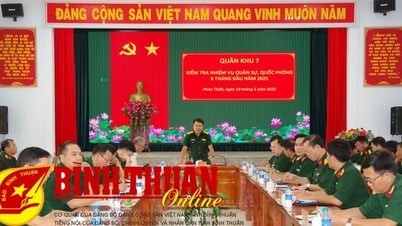
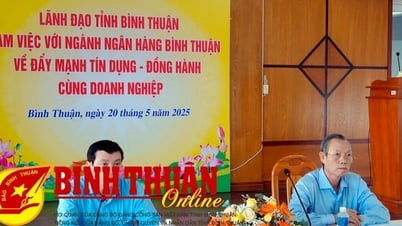



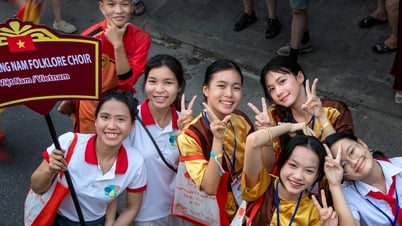





















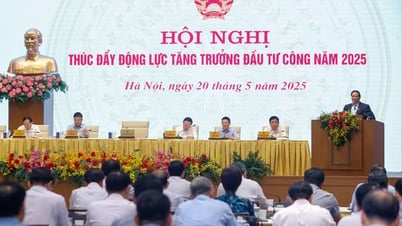







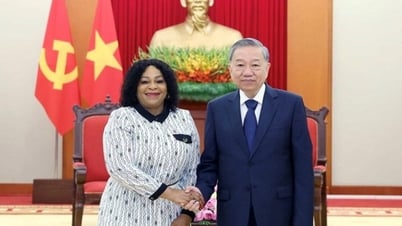






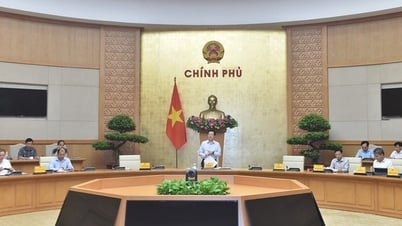

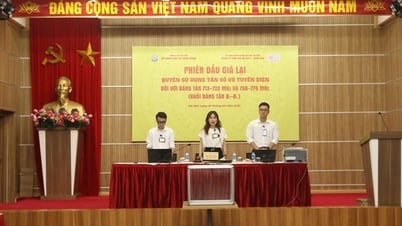

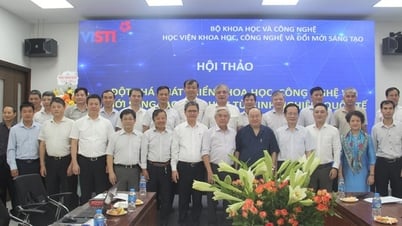
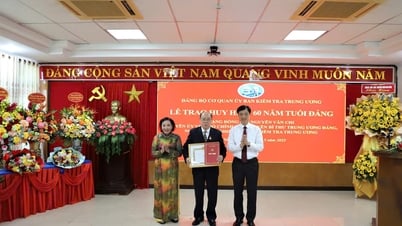

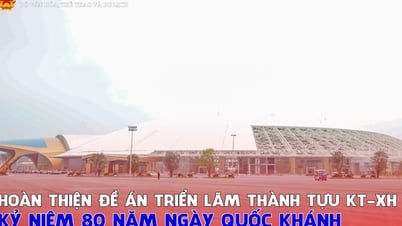
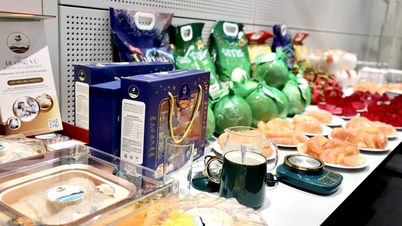













Comment (0)